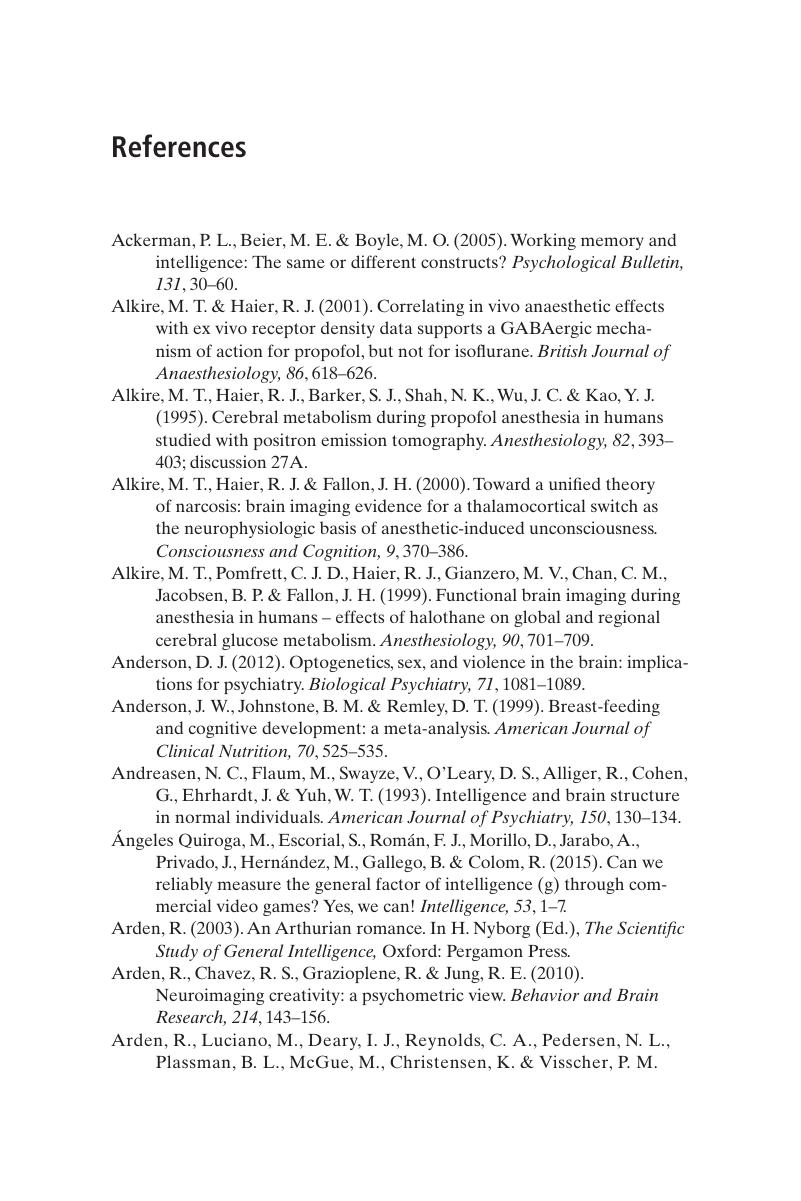Book contents
- The Neuroscience of Intelligence
- Cambridge Fundamentals of Neuroscience in Psychology
- The Neuroscience of Intelligence
- Copyright page
- Dedication
- Reviews
- Contents
- Preface
- Acknowledgments
- Chapter One What We Know About Intelligence From the Weight of Studies
- Chapter Two Nature More than Nurture: The Impact of Genetics on Intelligence
- Chapter Three Peeking Inside the Living Brain: Neuroimaging Is a Game-changer for Intelligence Research
- Chapter Four 50 Shades of Gray Matter: A Brain Image of Intelligence is Worth a Thousand Words
- Chapter Five The Holy Grail: Can Neuroscience Boost Intelligence?
- Chapter Six As Neuroscience Advances, What’s Next for Intelligence Research?
- Glossary
- References
- Index
- Plate Section
- References
References
Published online by Cambridge University Press: 13 July 2017
- The Neuroscience of Intelligence
- Cambridge Fundamentals of Neuroscience in Psychology
- The Neuroscience of Intelligence
- Copyright page
- Dedication
- Reviews
- Contents
- Preface
- Acknowledgments
- Chapter One What We Know About Intelligence From the Weight of Studies
- Chapter Two Nature More than Nurture: The Impact of Genetics on Intelligence
- Chapter Three Peeking Inside the Living Brain: Neuroimaging Is a Game-changer for Intelligence Research
- Chapter Four 50 Shades of Gray Matter: A Brain Image of Intelligence is Worth a Thousand Words
- Chapter Five The Holy Grail: Can Neuroscience Boost Intelligence?
- Chapter Six As Neuroscience Advances, What’s Next for Intelligence Research?
- Glossary
- References
- Index
- Plate Section
- References
Summary

- Type
- Chapter
- Information
- The Neuroscience of Intelligence , pp. 210 - 242Publisher: Cambridge University PressPrint publication year: 2016



